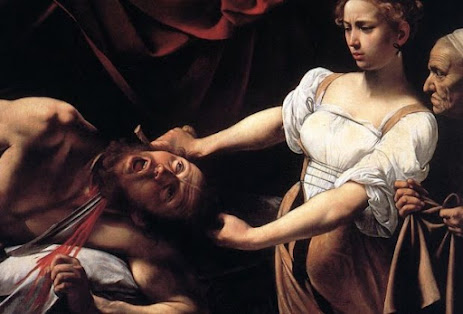Notes on Caravaggio
Today we had a lecture where we learned about Michelangelo Merisi also known as Caravaggio.
He was a painter and his early works were still lives and portraits which he sell to survive. One of his works is called "Basket of fruit" 1599, where he captures a lot of detail making the painting look really realistic. His inspiration came from street life which his experience comes from.
He started painting religious and "social scenes" of people he lived or spend time with. His religious paintings were updated in modern Rome where his subjects were described as religious, spiritual and biblical stories. A technique he used called Chiarosucro (which means light and dark) created "intense drama" and helped make the main characters more focused in his work, like "The calling of St Matthew".
His paintings are cinematic that express action, drama, horror, and anguish which he spend a lot of time on by setting his models in specific poses in which they had to stay in for hours. He called himself the "most famous painter" in Rome. However, his life experience was wild including drinking, gambling, getting in trouble with the authorities, etc. He was also involved in incidents that drove him to commit murder in 1606 which resulted in spending his 4 last years on the run while he still painted. His final paintings were "dark and sombre" which was a reflection of his state of mind. He was murdered by being stabbed in 1610.
Judith beheading Holofernes (1602)
Later in the lecture, we were shown a 20-minute video that talked about one of his paintings "Boy bitten by a lizard". It analyzed the painting like the rose's meaning which was to show how easily things die "short-lived like life", the lizard that can symbolize temptation and consequences. It also talked about the boy maybe being Caravaggio creating a self-portrait, the presenter said that maybe he looked in a mirror and captured the expression he needed for the painting. The meaning of it was him giving a warning, also as he said "too much of any good thing is bad for you".




.png)

.png)
Good effort, don't forget to add your references for where you found your background information and the images.
ReplyDeleteWas there anything in Caravaggio's work that you could use in your project, in terms of the theme? What did you think of the video and how it broke down the painting? Did you agree with this or think he was reading too much into it? Has it made you think differently about how to analyse an artwork?